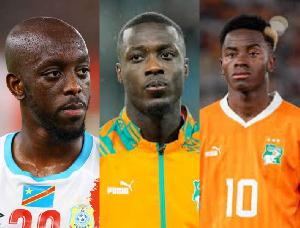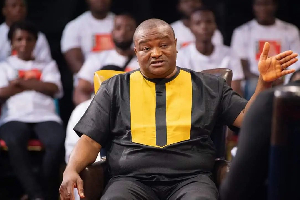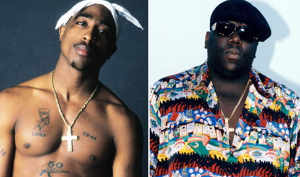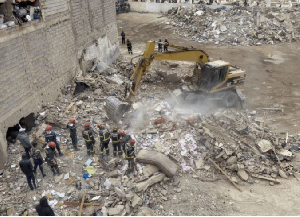It is common knowledge that Ghana’s democracy and electoral politics did not emerge out of a vacuum.
In fact, over the past five decades, the country has chalked quite a remarkable niche in its political history, most of which bothers on the evolution of the legislative body and presidential regimes.
For this reason, GhanaWeb in this article brings readers a riveting and informative account of how the law-making body, otherwise known as the Parliament House has evolved since the country’s very first parliamentary election in 1951.
PS: Some pertinent details will not be featured in this article for the purposes of meeting the aim of this article.
The Legislative Assembly which now is the Parliament experienced its very first moment of truth in 1951 where it was given permission to elect 38 members of the Assembly from the three territories – the Colony (Sekondi-Takoradi, Accra, Cape Coast and its environs) Ashanti (Kumasi and its environs) and Trans-Volta.
It must be noted, however, that this was not the first time elections were being conducted amongst members of the Assembly but it was the first time the general public were handed the right to elect their representative under the principle of universal adult suffrage.
Cumulatively, the Legislative Assembly comprised a Speaker and 84 members (38 elected, 9 appointed by the Governor, 37 appointed by the territorial Council of Chiefs.). The CPP and UGCC were the two main political parties then.
The CPP won 34 of the 38 seats while UGCC won two, and the other two taken by independent candidates.
Meanwhile, in this period, the agitation for freedom from colonial rule was gaining great momentum and unknown to several novices in the political sphere this was nothing but the beginning of greater strides in the history of electoral politics in the country.
1954
In 1954, there was another parliamentary election, this time the number of elective Legislative Assembly seats had expanded from 38 to 104. The breakdown is as follows; the Colony (44 seats), Northern Territories (26 seats), Ashanti (21 seats) and Trans-Volta (13 seats).
More interestingly, the number of contesting political parties had increased. Seven more had come to join the already existing CPP and UGCC. Another significant milestone in that particular parliamentary election was that for the first time a woman was elected to join the Legislative Assembly. Mabel Dove, won on the ticket of the CPP.
The CPP won 71 seats, NPP (Northern People's Party) won 12, TC 2, GCP 1, MAP 1, AYO, 1 and 16 independent winners.
1956
In 1956, a parliamentary election was once again held as a result of NLM’s emergence and the Togoland plebiscite but that did not have any significant impact on the number of parliamentary seats.
This ushered in the second phase of Ghanaian electoral politics.
1957-1960
Prior to the attainment of the Republican status, Ghana gained independence in 1957 yet no substantive changes were recorded in the Legislative Assembly. Nkrumah became the first President of Ghana within this period as well. It must be emphasized that no Parliamentary Election was held within this period as the existing Assembly was given another five-year term.
1965
During this period, the number of elective seats of the Legislative Assembly which now will be called the Parliament had again recorded an expansion in the number of parliamentary seats to 198. However, one defining feature in this period was that President Kwame Nkrumah had declared himself life president and the CPP, the only legal party.
Thus most aspirants contested unopposed.
1966 - 1970
This particular period has been described as one of the most eventful and historic in Ghana’s political development.
Why?
Ghana’s first president, Nkrumah was overthrown within this period. The election which ushered Ghana into the second republic was held in 1969 and quite significantly, the number of parliamentary seats had been reduced from 198 to 140. Also within this period, new political parties sprang up PP, NAL, UNP, PAP, APRP and an independent candidate. The parliamentary seats were occupied as follows; 105, 29, 2, 2, 1, and 1 respectively. In 1970, a presidential election was held. KA Busia became Prime Minister.
1979
The 1979 parliamentary election was held the same day as the presidential election and seats were still 140 but this time with 6 political parties. Prior to this, new parties had emerged to contest the elections; namely, PNP, PFP, UNC, ACP, SDF and TFP. The result of the parliamentary elections are as follows, PNP 71, PFP 42, UNC 13, ACP 10, SDF 3, TFP 0 and independent candidate 1.
The fourth republic Parliamentary elections
This period of parliamentary evolution continues to date and has had some interesting twists to it as well. But before the commencement of the 4th republic, the country experienced some phases of military rule and coup d’état which continues to define the country’s democratic development. Also, the country hit another major milestone when it adopted the 1992 constitution.
With over a decade in power, PNDC’s Jerry John Rawlings gave way for multiparty democracy and a Presidential and Parliamentary Elections were held once again.
This time, the number of parliamentary seats had increased from 140 to 200 and spread across 10 regions of the country. The aspirants contested on the ticket of three main parties– NDC, NCP and EGLE. The NDC won 189 seats, NCP won 8 seats, EGLE won 1 seat and 2 independent candidates.
Female parliamentarians
And more significantly, the number of female representatives in parliament had increased from 1 in 1954 to 16 in 1992.
1996
By this period, it had been resolved that both parliamentary and presidential elections were to be conducted on the same day. The number of parliamentary seats had also not changed significantly. It remained at 200 but seven parties involved. They were, the NDC, NCP, EGLE, NPP, PNC, PCP and DPP.
However, in the end, the NDC maintained its majority rule with 133 seats, followed by the NPP with 61, PCP with 5, PNC won 1 and the others with no seats at all.
The female parliamentarians produced by this election had increased to 18 from 16.
2000
The 2000 parliamentary elections did not differ hugely from the previous one because the seats remained the same, 200.
However, there was quite an unusual number of independent candidates who added on to the seven contesting parties. In fact, there were 63 independent candidates going head-to-head with NDC, NPP, CPP, PNC, NRP, GCPP, UGM.
At the end of the battle, NDC lost its dominance to NPP with 92 seats, while the NPP triumphantly ascended the reins of power with 100 seats. Of the 63 independent candidates, only four entered parliament. PNC won 3 seats and CPP won only 1.
2004.
Prior to the 2004 polls, 30 more constituencies had been added on to the already existing 200.
With one more party adding on to the already existing seven and an alarming 126 independent candidates. At the aftermath, NPP maintained its dominance with 128 seats, NDC following with 94, CPP with 3 and one independent candidate. The other parties namely; GCPP, EGLE, NRP, DPP got no seat.
The notion of getting more women in parliament was gradually picking up pace as 25 women were elected then.
2008.
After four years, the day of reckoning had come again and this time no significant increased had been recorded in the size of parliament. However, the NDC regained its majority in parliament after winning 116 seats while the NPP was thrown into opposition after losing 21 seats. CPP further declined from 3 to 1.
Five women lost their seats reducing the number of feminine presence to 20.
2012.
Before the 2012 election, constituencies were re-demarcated moving the existing number of parliamentary seats from 230 to 275. It was also the debut season for seven more parties who added on to the already existing seven.
At the end, NDC maintained its dominance with 148 seats as NPP followed with 123, PNC got 1 seat and three independent candidates entered parliament.
Women parliamentarians made it to 30 in the sixth parliament; which will eventually become 31 as one more female was elected through a by-election in 2016.
2016.
Once again no substantive changes were made to the number of parliamentary seats. Ten parties contested the parliamentary election, in all. Interestingly, the seats were split between only NPP and NDC with the former ending their minority. The NPP emerged with 169 seats while NDC began their minority with 106 seats.
The female representation grew to 37 from nine regions.
The next election is scheduled to take place in December 2020. However, it must be noted that the country has undergone a regional re-demarcation, increasing the number of regions from 10 to 16.
Additional files from: Alex KD Frempong’s ‘Elections in Ghana’
General News of Friday, 19 June 2020
Source: www.ghanaweb.com













